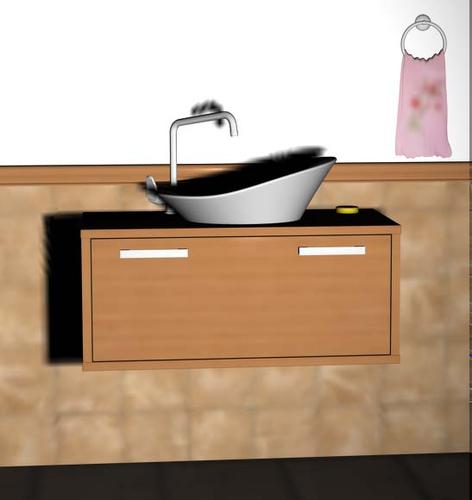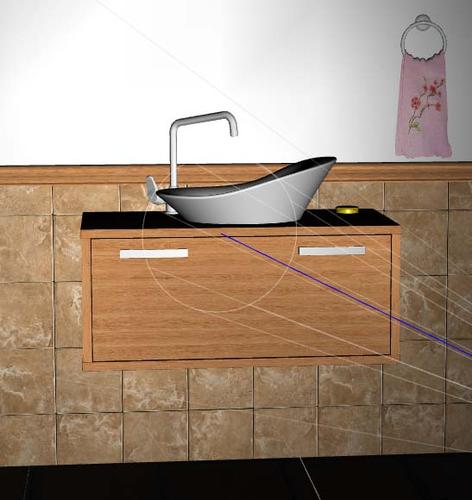Render problem...
HEEEEELP! My god i am a newbie! :o@
lol
Started learning D|S today and i ran into a problem that i need help to solve. See attached images.I have a simple scene that i imported from Poser format. When i render the scene i get bad result whatever settings i use. The shadows doesn't look ray traced at all. And why are the textures blurred? What am i missing??
Settings for the attached render example:
Render settings:
Ray trace depth: 1
Pixel samples (both): 37
Shadow samples: 64
Gain & Gamma: 1
Shading Rate: 40
Pixel filter: Sink
Pixel filter width: 6
Pixel filter height: 6
Spotlight Settings:
Shadow Type: Raytraced
Softness: 0%
Bias: 20
Illumination: On
Intensity: 100
Spread Angle: 75%


Q2.jpg
547 x 580 - 44K


Q1.jpg
547 x 580 - 57K


Comments
Wow, that is a problem! LOL. Try resetting the render settings to default. Many of the settings you show are just too high and not necessary for good results. Here is what my settings are for almost all renders, and they are fine. Others will have more suggestions, maybe better suggestions, but these settings will help you for now...
Ray trace depth: 2
Pixel samples (both): 4 and 4
Shadow samples: 16
Gain & Gamma: 1
Shading Rate: .1 (This is your main problem with the shadows. Higher settings "offset" the shadow, and can cause textures to render wrong.
Pixel filter: Sink
Pixel filter width: 6
Pixel filter height: 6
Thanks! :oD
Ok, shading rate was the main problem. Lowering the shadow bias on the light also helped.
Now i get this (see attached image). How do i make the shadows softer? Also, this is an indirect lighting camera (created from a tutorial) but the IDL effect isn't showing. Am i supposed to enable something else for this to work?
Jörgen
The shadows are harsh because there's no additional lights in your scene. Unlike the real world, Daz lights only travel in a straight line and vanish if they hit an object. This means that there's no light bouncing around to fill in the gaps, so we need to fake it by adding additional lights. Use a 3 point lighting system where possible. One as your 'main' light, another as a filler and a third as a backlight to give depth and contrast to an image.
Herald has it right. Another option would be to adjust the Softness setting on your spotlight, which will soften but may also leave grainy areas as the light fades off. Yet another would be to use Uberenvironment 2, which in my opinion would do quite a bit to the realism of your vignette. It can help with ambient occlusion, indirect lighting, etc. I think this also will address your IBL question. Beyond that, I don't know what to tell you.
Uberenvironment has plenty of online help to get it set up correctly.
Not if you are using IDL that emulates just this. When using an IDL camera the rays are supposed to bounce (affected by the surface behaviour such as reflectivity, refraction, color etc) illuminating the whole scene. I attached a Poser render of the same scene (a model of my bathroom :o) using one (1) point light and IDL activated. Poser allows for quite detailed control of the IDL settings to balance speed/quality. I need to recreate this in D|S but Studio works completely different. I feel like a ship captain who tries to fly an airliner. :o/
Überstuff is great but i want to learn to control this in detail.
Not if you are using IDL that emulates just this. When using an IDL camera the rays are supposed to bounce (affected by the surface behaviour such as reflectivity, refraction, color etc) illuminating the whole scene. I attached a Poser render of the same scene (a model of my bathroom :o) using one (1) point light and IDL activated. Poser allows for quite detailed control of the IDL settings to balance speed/quality. I need to recreate this in D|S but Studio works completely different. I feel like a ship captain who tries to fly an airliner. :o/
Überstuff is great but i want to learn to control this in detail.
To recreate the same thing you'd need UberEnvironment, but because you're using 3Delight and not Firefly, you need to use tricks.
UberEnvironment isn't a true light, it's a shader and lacks a lot of the properties of 'real' light. For starters, there are no specular highlights using UE, so if you purely used the UE with indirect lighting, you're losing a lot of additional detail. There is an option for' Bounce GI' lighting as well which offers colour bleeding (so a shiny red object reflects shiny red light, for example) but I've found it to be so computationally expensive that renders which normally take minutes to finish can take countless hours.
Shortcuts and tricks are common when working with 3DL as it both keeps the render times low as well as retains as much detail as you need in an image. UE is a fantastic tool, but shouldn't be the only one in your arsenal.
HOF this can be done via the Shader Mixer as the OP is trying to do but for this type of IDL it needs a special Shader Mixer Camera and Light so my question is did ohman make a Shader Mixer Light too. :) and can you post a link to the tutorial please.
As far as I know specularity is a problem with all environment lighting solutions - you can set a normal light to be specular only, or you can set up objects with a high ambient strength to simulate your light sources and make sure that the model surfaces are reflective. pwSurface 2 will give you per-surface colour bleeding, still computationally expensive but more controllable than UE's global version.
You probably created the ID camera, but you aren't rendering through it. You need to switch to it before hitting Render.
I followed this tutorial:
http://www.youtube.com/watch?v=G2lwC6HHTrU
...i can't see that she use Überenvironment? Or does she? I only see that she adds an IDL camera. Seems like only camera and light to me. Did i miss something??
Help me here. Exactly what is Überenvironment? Is it a plugin or a shader? If it is a plugin with additional software i can understand that it expands the functionality of 3DLight, but then it needs to implement a forward-raytracing engine to calculate IDL. If it is just a shader then i think should be able to do all it does myself manually. Ready-to-use stuff isn't my way of doing things. I like to do it the hard way and learn how to get exactly what i want. :oB
Yeah i got it now!!! Weeeeee! :oD
Thanks Szark! I was lazy and just watched part two of the tut so i missed the part with the shader light! I never learn!
Thanks all! You will soon hear me scream for help again.
Tutorials:
Part 1: http://www.youtube.com/watch?v=G2lwC6HHTrU
Part 2: http://www.youtube.com/watch?v=FwCHxSTlOQo
/Jörgen
LOL Now that is what you get for being lazy...now that told you. :) Yes I am only joking.
Glad you got it now ohman.
UberEnvironment 2 is a IBL light source (IBL = Image Based Lighting) which extracts lighting information from images, more importantly HDRI (High Dynamic Range Image) or in this case you can just use the colour channel as the main light source. Google the terms and all should become clear as mud. :) You can use low resolution images like jpeg but the results you get aren't worth the effort IMHO.
Here is an excellent thread on * Learning UberEnvironment 2
Another off-topic question: Why in the world do i show as "New Member"? I joined here about 10 years ago...
because the site was revamped a little under a year ago, and the new site uses different software. It was not possible to carry over post counts, so every one started as a new member. That status changes as you make more posts.
There is even a tread (or to be more accurate a series of threads) about this in the Members Only Forum, as people post random jottings and gather up post counts and gain "little green boxes" as they do so
http://www.daz3d.com/forums/discussion/20303/